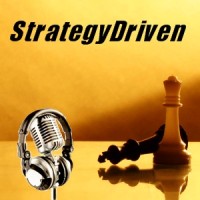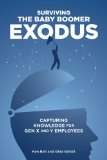StrategyDriven Podcast Special Edition 52b – An Interview with Ken Ball and Gina Gotsill, co-authors of Surviving the Baby Boomer Exodus, part 2 of 2

Special Edition 52b – An Interview with Ken Ball and Gina Gotsill, co-authors of Surviving the Baby Boomer Exodus, part 2 of 2 explores methods for effectively capturing, retaining, and transferring the knowledge of departing workers thereby enabling those who remain to continue to use this hard-won information to the benefit of the organization. During our discussion, Ken Ball and Gina Gotsill, co-authors of Surviving the Baby Boomer Exodus: Capturing Knowledge for Gen X and Y Employees, share with us their insights and illustrative examples regarding:
the characteristics of a good knowledge retention program
- how to identify those individuals whose knowledge should be captured and retained
- how to identify when someone is likely to retire, including the legal and ethical restrictions surrounding such activities
- overcoming employees’ fear of personal value loss when sharing their hard-won knowledge
- actions leaders should take to ensure captured knowledge reaches those who need it in a way and at a time that makes it useful to them
- how a knowledge retention program’s return on investment and overall programmatic success can be measured
Additional Information
Ken and Gina’s book, Surviving the Baby Boomer Exodus: Capturing Knowledge for Gen X and Y Employees (Course Technology PTR, Cengage Learning 2010), can be purchased by clicking here
.
Final Request…
The strength of our community grows with the additional insights brought by our expanding member base. Please consider rating us on iTunes by clicking here. Rating the StrategyDriven Podcast and providing your comments online improves our ranking and helps us attract new listeners which, in turn, helps us grow our community.
Thank you again for listening to the StrategyDriven Podcast!
About the Author


For more information about Ken Ball and Gina Gotsill and Surviving the Baby Boomer Exodus (Course Technology PTR, Cengage Learning 2010), please visit their website www.survivingtheboomerexodus.com.
Podcast: Play in new window | Download (Duration: 23:53 — 32.8MB)
Subscribe: RSS

